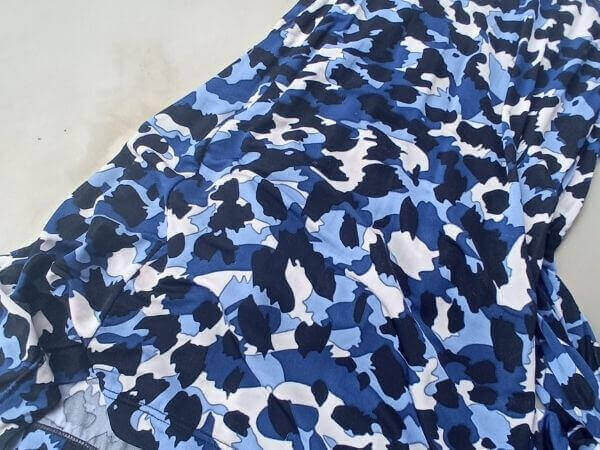

Choose pants patterns that have a little bit of ease at the hips, and be sure to interface the waistband to prevent stretching. Swing tops and dresses, woven T-shirt patterns, loose camis, or wrap skirts can all be beautifully made in a rayon challis.īe wary of pants patterns, as pants with a fitted bum can easily bag out with little possibility of returning to their original state.


Pick a pattern with some amount of drape and considerable ease. When picking a project, avoid very fitted garment patterns. But the aforementioned linen-rayon blend could be perfect for an easy spring garment. That may not be the best fiber content for swimwear fabric since rayon retains moisture and bags out. For example, perhaps you've found what looks like a beautiful swimsuit knit, but it's high in rayon content. When shopping for rayon, consider its final use and what you'd like out of the fabric. The fabric has a tendency to bag out when worn without returning to its original state after washing, so when choosing a pattern for your rayon fabric, lean toward those with drape and that are loose fitting. Rayon has the poorest recovery of any fiber on the market. Again, with rayon's shifting tendencies, you may find that your hem has dropped a surprising amount. Hang your nearly finished garment for 24 hours or more before hemming it. Since rayon can stretch, you want to staystitch your necklines and any curves before sewing. In rayon's case, I recommend a prewash of 30 degree Celsius and tumble dry medium, and for practicalities sake, a cold wash in a mesh garment bag (or even a hand wash) and hang dry after it's been turned into a garment, with the suggested option of dry-cleaning.ĭon’t skip the staystitching.

My general theory on prewashing is to abuse it as much as it can handle while it's still cloth, then treat it with as much care as I can give it after it's turned into a garment. But in my research, I learned that one major downside to rayon is that the fibers are significantly weakened when wet thus they are susceptible to damage every time it goes through the wash, reducing its lifespan. I personally used to believe this was the case in RTW because the vast majority of garment producers don't take the extra precaution of pre-shrinking fabric like we as home-sewists do. It's not commonly talked about in the sewing community since we think of rayon as an easy-care fabric (or at least more so than silk!), but it's heavily recommended in the fibers community as dry-clean-only. Here are a few things to watch out for when working with rayon. It's washed so thoroughly that by the time it reaches our hands, there's nary a trace of its chemical process. At that point, it's spun and stretched into the fibers we love to wear, and given a final bath to remove all chemicals before being woven into fabric. It's aged here again, then filtered, then extruded into filaments and placed in an acid bath where it turns into rayon. The solids are kept, shredded, and aged, at which point it's dissolved in another chemical solution, this time with the consistency of honey (which is where we got the OG name, viscose). I'll be the first to admit that that last part is debatable since technically rayon is made out of wood pulp, but rayon undergoes a pretty elaborate process to become what it is.Īfter having read through several articles explaining the process of how rayon is made, the best way I can break it down is this: the wood pulp is broken down in a chemical solution, after which the liquid is extracted and discarded. Rayon is one of those misunderstood fibers that's often mistaken for synthetic-and in my opinion-also mistaken for natural. While in the rest of the world, the name viscose stuck, in 1924 the US adopted the name rayon, a French word meaning ray (of sunlight), alluding to the vividness of color in rayon fabric. However, it wasn't until 1905 that it was commercially used in the UK and 1910 in the US. Rayon, invented in France in the late 1800s, was the first human-made fiber ever invented and originally named viscose by its English patentees. And what is synonymous with springtime sewing if not rayon? Today, we're breaking it down to get us all excited for our warmer weather me-made wardrobes: what is rayon, where did it come from, and what is it good for? Finally, I can start dreaming of those lovely drapey layering pieces, for those long days when I can slow down on my vitamin D supplements and ramp up on my late-afternoon sewing. As I write this, I'm still bundled up in wool sweaters, but it's slowly warming up here in the Northern Hemisphere, and it's time to start planning our wardrobes for warmer weather. These are all things I think of when I think of garments made in rayon.


 0 kommentar(er)
0 kommentar(er)
